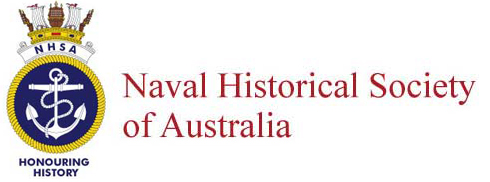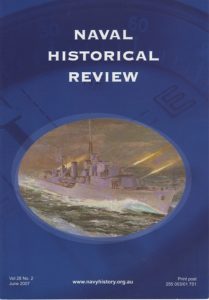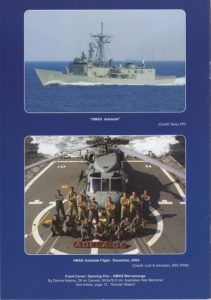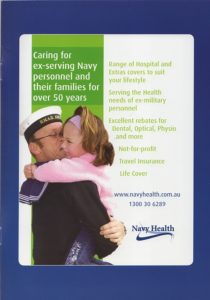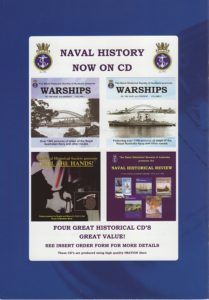By Greg Swinden
This article was first published in the Naval Historical Review, June 2000 edition.
HMAS Countess of Hopetoun (commanded by Boatswain Samuel Waugh, RN), a 23-year-old Torpedo Boat of some 75 tons, and her sister ship HMAS Childers (commanded by Gunner (T) Hamilton Woods, RAN) departed Williamstown Naval Depot on the evening of 13 December 1915. They proceeded south to Sorrento where, due to adverse weather conditions, they spent the night.
At 0445 on 14 December the two vessels, under the overall command of Lieutenant Commander George Inner, RANR (who was embarked in the Countess) got underway again and proceeded through The Rip. They passed Point Lonsdale at 0530 and proceeded out into Bass Strait.
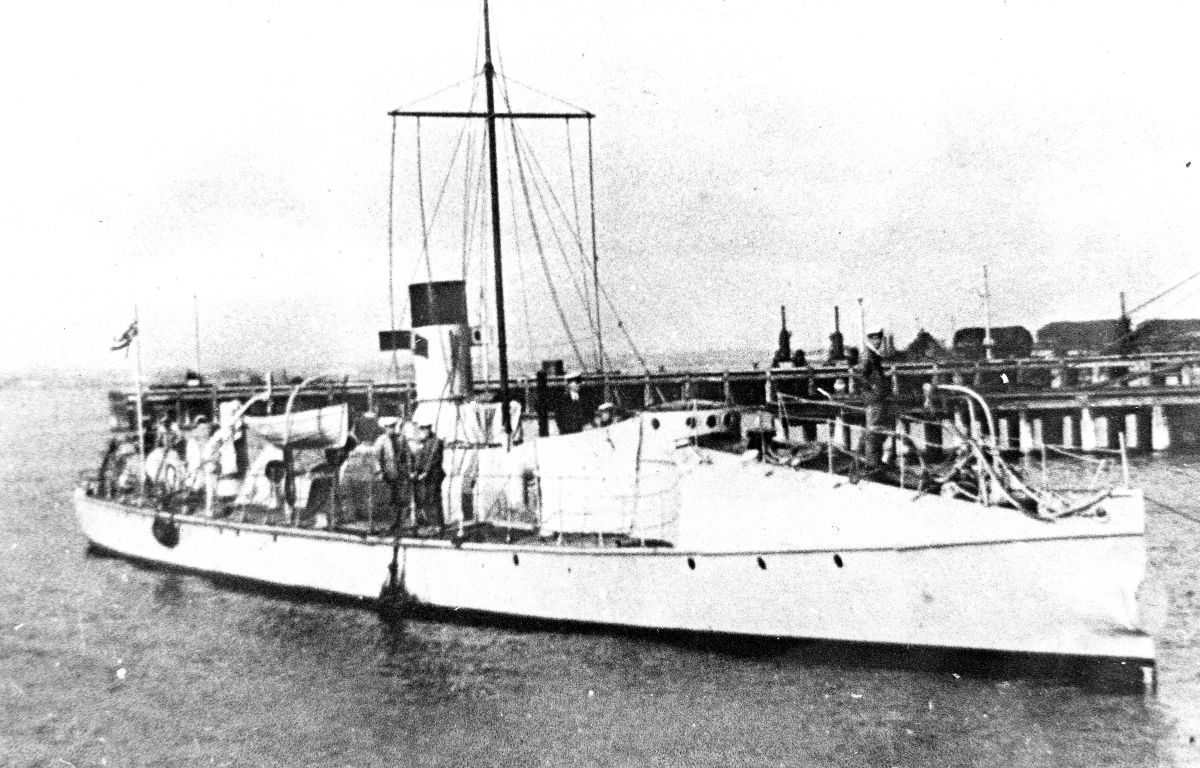
As well as her normal crew, the Countess had onboard Engineer Lieutenant Frank Gillispie Cresswell (the Fleet Wireless Telegraphy Officer and no relation to Rear Admiral Creswell) and Signalman S.P. Baker of the RANR who was a qualified Wireless Telegraphy Operator. They were onboard to install a wireless set in the ship and it was planned that once the set was installed they would test it by calling up the Naval Lookout Station at King Island.
A heavy swell came up as the ships were crossing Bass Strait and at 1230 the Chief Engine Room Artificer in Countess reported that a boiler tube had burst and that the ship was losing pressure in her boiler. Innes ordered Childers to take the Countess in tow, but after several attempts, in which both the port and starboard towing bollards in the Countess were ripped out of the deck, the tow was abandoned.
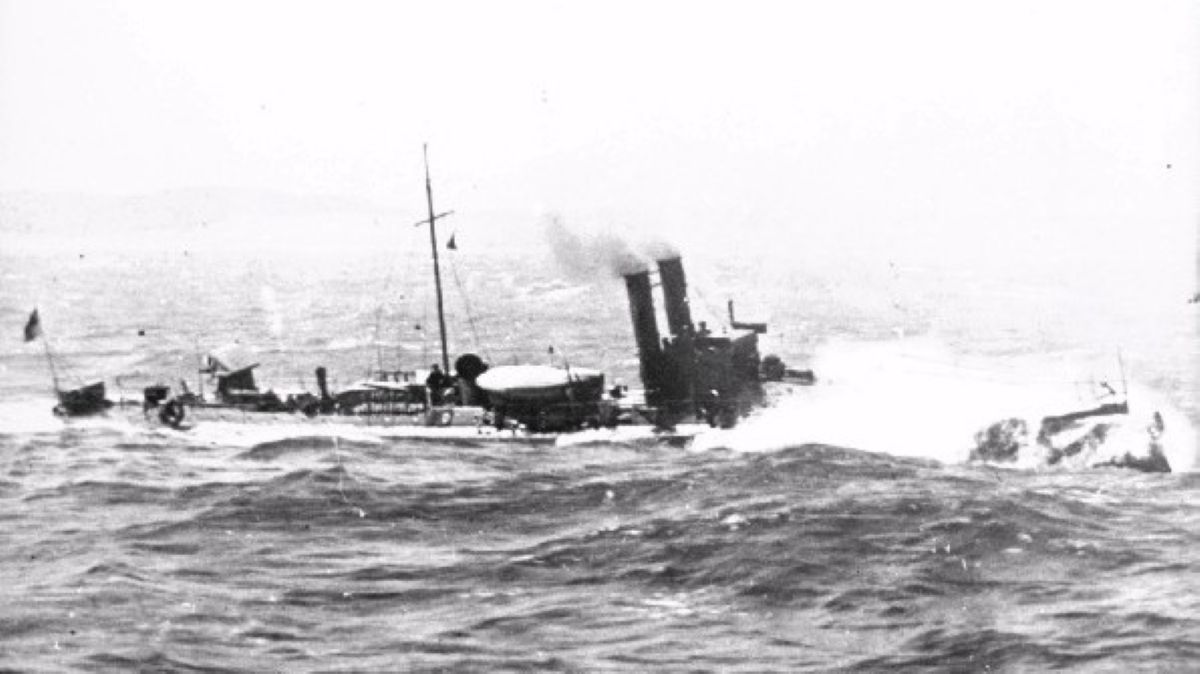
At 1500 Innes ordered a sea anchor to be streamed and dispatched Childers, at speed, to Queenscliff with a request for assistance. As a result of the Countess’s predicament the tug Nyora was dispatched from Williamstown at 2045 on 14 December. As well as her usual civilian crew the tug had onboard ten Naval personnel, under the command of Sub Lieutenant T.C.A. Black RANR, to assist with the towing of the Countess. Nyora rendezvoused with Childers at 0200 on 15 December and passed through the heads into very heavy seas.
Nyora sighted the Countess at 0730, after the torpedo boat had fired its three pounder gun to attract the tug’s attention, and after passing a towline began to tow the stricken vessel at 0910. As the slack in the towline was being taken up the tug began to tow the torpedo boat beam on.
As a result of the towing bollards being ripped out of the deck, the towline had been placed around the torpedo boat’s small ‘conning tower’ type bridge. Thus the tug began to pull the Countess sideways and at one point her port navigation light was under water. As the Countess was pulled over, the heavy seas swept her deck and washed Signalman Sydney Percy Baker over the side.
The men onboard the Countess threw several items, including lifebuoys, lifebelts, cork fenders and even some wooden boxes to Baker. Once the Countess had been righted, a search, which lasted for over two hours, for Baker commenced. Although all the items thrown to him were sighted or recovered the unfortunate sailor was never seen again.
One of the men in Countess had been told to keep an eye on Baker while he was in the water and had seen him disappear under the water and considered that he might have been taken by a shark (it is not known if Baker could swim or not). Baker’s body was never recovered and subsequently he was listed as a War Casualty and his name recorded on the Plymouth Naval Memorial to the Missing.
After some further difficulties in securing the towing cable the towing recommenced at 1340 at a speed of five knots. At 1845 the two ships, escorted by Childers, passed through the heads into Port Philip Bay and speed was increased to 11 knots. Nyora and the Countess arrived at Williamstown at 2045 on 15 December 1915. The tug slipped her tow and a picket boat assisted the Countess to her berth. It was then that the administrative wheels of the Navy began to turn.
Court of Inquiry
The District Naval Officer (DNO) in Sydney was advised of Baker’s death on 16 December and asked to send a Chaplain to advise his mother, Mrs Emily Baker, of 30 Suffolk Street in Paddington.
A court of enquiry into Baker’s death and the breakdown of the Countess of Hopetoun was ordered by Rear Admiral Creswell on 20 December. The enquiry convened onboard HMAS Cerberus on 23 December 1915 and was completed six days later. The Enquiry Board consisted of Captain J.T. Richardson, RAN, Captain W.H. Thring, RAN and Commander George Elgan, RAN.
The result of the enquiry was that the breakdown of the Countess was attributed to a burst boiler tube that had deteriorated due to fair wear and tear, as the tubes were over five years old. The boiler tubes had been checked in May 1914 and were due for retesting in May 1916. The boiler had also been recently overhauled, but the tubes had not been checked as they were considered to be in good condition from the 1914 survey. Also the tubes could not be checked as this would require the complete dismantling of the boiler. No blame was attributed to anyone in the Navy or to those who had overhauled the boiler.
Signalman Baker’s death was attributed to the heavy seas and it was considered all possible steps had been taken to recover him. Again no blame was attributed to any one individual or group. The enquiry commended Lieutenant Commander Innes for his seamanship and leadership in the difficult conditions and he in turn commended several of the men from the Countess of Hopetoun including the late Signalman Baker.
Following the enquiry Rear Admiral Creswell issued a directive that both Childers and Countess of Hopetoun were not to be employed outside of Port Phillip Bay, unless in very favourable weather conditions or if the circumstances were urgent, as due to the age of the ship’s boilers they could not be considered reliable. Neither ship was designed for the heavy weather conditions often experienced in Bass Strait nor were they designed for effective towing in the event of a breakdown.
Fate of Childers and the Countess
Childers was decommissioned in April 1916 and the hulk was sold in August 1918. The Countess of Hopetoun served on as a tender to the Williamstown Depot until the end of the war when she was laid up into Reserve. Her hulk was eventually sold in April 1924.
Although the enquiry was concluded quickly the incident lingered on for several months, as it was not until October 1916 that Mrs Emily Baker (a widow with two other children to support) was finally granted a pension of two pounds per fortnight for the loss of her son. Despite having submitted all the relevant documentation for the pension in January, and writing to advise the Navy that the loss of her son was going to cause her serious financial hardship, it still took the Deputy Commissioner of Pensions some 10 months to authorise the pension.
The Navy also quibbled over the cost of the tug hire when the bill from Huddart Parker Limited, for 176 pounds and 8 shillings, came in for the use of the tug Nyora. They considered the hourly rate of seven pounds and seven shillings for 24 hours was excessive and that the Navy should not have to pay for the transit time it took the tug to reach the stricken vessel. After much wrangling between Navy Office and Huddart Parker Limited the full bill was paid.
The final chapter in this whole saga occurred in late 1922 when a small brown package arrived at the home of Emily Baker. Inside was her son’s standard issue British War Medal.
Bibliography
- Gillett, R. Australia’s Colonial Navies, Naval Historical Society of Australia, Sydney 1982.
- Lind, L. The Royal Australian Navy – Historic Naval Events Year by Year, Reed Books 1986.
- Navy Office File 16/16/517 (HMAS Countess of Hopetoun – Minutes of Court of Inquiry re Breakdown of the Vessel and the Death of Signalman S. Baker RANR) held at the Australian Archives Melbourne.
